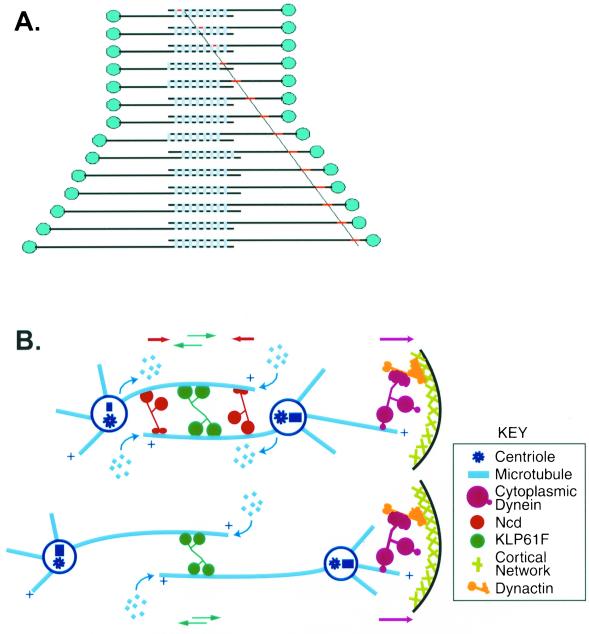Figure 4.
Flux is converted to sliding at the onset of anaphase B. (A) Behavior of speckles on ipMTs. During the metaphase/anaphase A isometric state, flux (red dot tracked by diagonal line) is due to subunit addition at plus ends of antiparallel MTs within ipMT bundles (over-lapping horizontal lines) and subunit loss at minus ends coupled to the sliding apart of ipMTs driven by MT sliding motors (light blue bars) so the poles (blue dots) maintain a constant spacing. At anaphase B onset, subunit loss at the poles stops while subunit addition at plus ends and MT-MT sliding continue. This converts flux to net sliding and consequently the poles are pushed apart. (B) Detailed schematic of the metaphase/anaphase A spindle (top) and anaphase B spindle (bottom), showing the three motors previously shown to be involved in mitosis (Sharp et al., 2000a) and sites of tubulin subunit addition and loss within ipMT bundles. During the metaphase/anaphase A isometric state, the action of sliding motors coupled to flux generates the balance of forces that maintains a constant spacing between the spindle poles. Tipping this balance by suppression of depolymerization at the poles leads to anaphase B, which may depend on KLP61F in the spindle interzone driving MT-MT sliding coupled to MT polymerization at the spindle equator (with cortical dynein augmenting pole-to-pole separation late in anaphase B; Sharp et al., 2000a).

